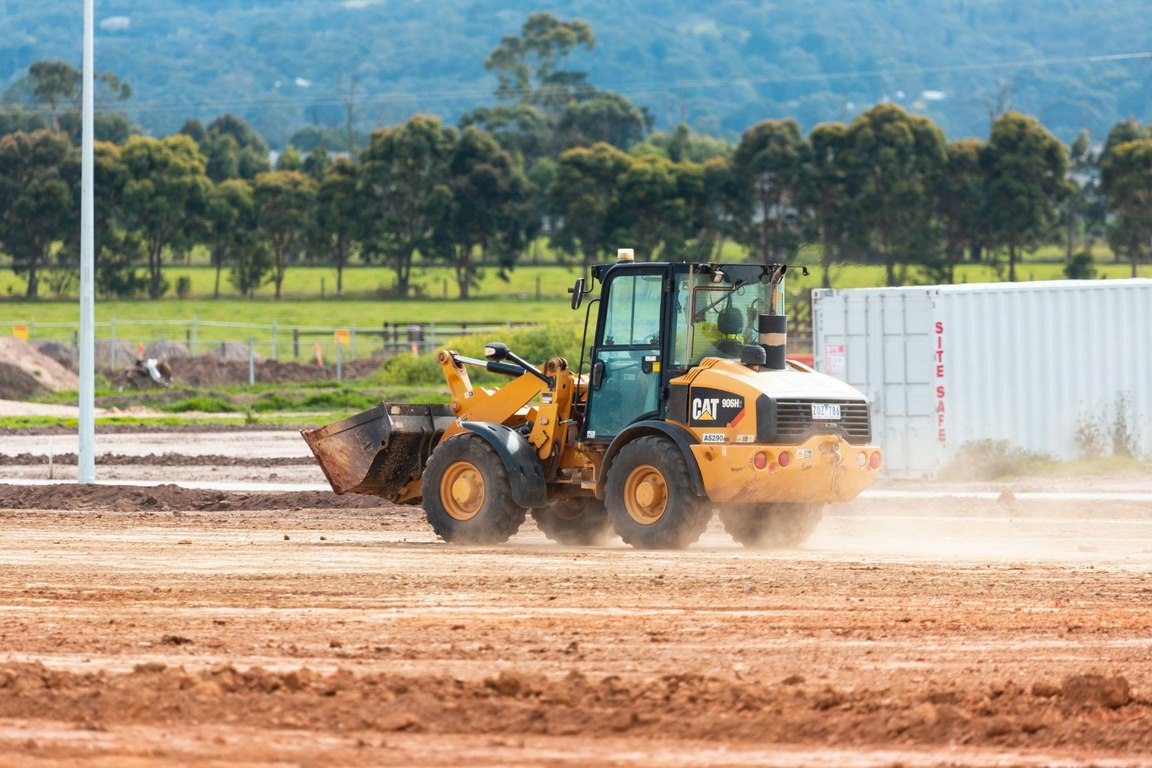Table of Contents Show
If you happen to work in the construction industry, you’re probably already aware of skid steers, which are also known as skid loaders by some. It’s almost always a requirement on construction sites.
Yet, if you’re still debating if you need to invest in this equipment for your work, then maybe browsing through the website of Skid Steers Direct would change your mind.

On another note, it’s still critical to discuss why this material could benefit the business to weigh in the advantages and disadvantages of using one. But first, what does a skid steer even do?
How they Work
There’s a reason why a considerable number of people swore to skid steer’s abilities, and it’s because this equipment often provides flexibility in any situation, such as:
Landscaping
In general, landscape contractors took advantage of skid steers depending on the task at hand.
If you don’t know, this type of machine is pretty much capable of hauling and lifting things from the ground, including plants, pavers, mulch.
This could also be helpful in terms of digging holes to plant trees, prepping the soil, trenching to install an irrigation line, sweeping, and so on.
Aside from that, it could lend you land in clearing snow in the area. Considering your location, you might be required to regularly perform a snow cleanup, especially in winter, as the early snowfalls could deter the team from working.
Conducting Agricultural Work
Farming is already tough as it is. Fortunately, machines like skid steers relieve the workload of individuals in the agriculture sector.
Regardless of your area of focus in agriculture or livestock management, this equipment could benefit you on any day of the year.
When using a skid steer for livestock management, some of the things that you could do are hauling feed by attaching a bucket or building protective fences through an auger attachment.
Once your feed has been delivered on the site, you’ll be able to bring the whole stock to a safe location where it’ll be stored and kept out of elements like raccoons or mice.
Then distribute a large number of the feed to the entire livestock with minimal effort on your part.
Demolition
Demolition has never been as easy as when using a skid steer. In the construction industry, demolition projects are common to pave the way for new infrastructure. However, this didn’t make it a piece of cake for the workers.
With the equipment, you’ll be able to do both exterior and interior demolition projects that come your way, as it’ll be quicker to demolish the drywall, flooring, and concrete owing to its precision and compact size.
Read Also:
Is Renting Better Than Buying?
There are pros and cons in renting or buying a skid steer, so here is our take on each option to help you make an informed choice:
Renting the Equipment
Typically, if you know that you would only use the equipment frequently, renting a skid steer instead is worth considering.
On the other hand, if you assess that your estimated cost in renting would exceed your expected expenses in purchasing the same equipment, then renting may not be for you.
Now, suppose you think that you’ll be using various kinds of skid steers in different situations.
If that is the case, we would like to recommend that you look into renting as this gives you control in picking the appropriate machine that best fits the application you’re aiming to fulfill.
This means that you’re free to choose to use a larger and vertical skid steer at the moment and pick a radial yet small skid steer next.
Of course, this practical tip is also applicable to the attachments.
As you know, the attachments could be multi-purpose, but some attachments are tailored specifically for the particular job.
As an addition to that information, this option is excellent if you don’t have enough space to haul the material, so storing the equipment and transporting it on the job site would be fairly easy as you could rent near the place.
Buying the Skid Steer
In case you’ve tried a long-term rental and are ready to utilize the equipment regularly, considering purchasing your skid steer might save you a couple of bucks!
Although, you should practice extreme caution by paying attention to your needs or even asking your dealer about your concerns.
Chances are, your dealer would be able to address your questions and might suggest the ideal type of skid steer for you, depending on your purpose.
Yet, skid steers could be multifaceted that they’re fit to accomplish several tasks, so if you’re looking for powerful equipment, then this one is the winner.
Buying a staple piece of equipment indeed is an investment itself. Still, we recommend seeing it from the perspective of financial commitment since it permits you to work efficiently and decrease your repetitive rental fees.
Overall, purchasing them is generally inexpensive compared to the ongoing costs in similar types of machines.
Choosing the Right Equipment
There would be various factors to keep in mind before you could find a suitable skid loader for your duty. Some of this is:
Equipment’s Size and Weight
Relying on your core application, various sizes such as small, medium, or large skid loader frames would usually meet your demands and retain their mobility and give you complete control.
These frames are then measured based on the rated operating capacity of the unit fused with its defined horsepower.
As stated by the Associated Equipment Manufacturers or AEM, the weight frames and size of skid steers are broken down into three general categories: large frames, medium frames, and small frames.
The large frame is measured by a minimum rated operating capacity of roughly 70-hp, along with being over 2,200lb in terms of weight.
On the other hand, medium frames range between 1,750 to 2,200lb with a rated operating capacity of 50 up to 70hp.
Meanwhile, small frames are based on their 50hp rated operating capacity, with their weight starting from 1,550 to 1,750lb.
The Terrain
When buying equipment, you must keep an eye on the site’s terrain or area of the place you’ll be working on.
Often, a skid steer’s wheels work best when roaming a site with an even, smooth, and relatively solid surface.
If the terrain is likely to be rocky or muddy, then there’s no guarantee that this handy machine would be of any help to you.
Consider it the rule of the thumb regardless of its operating weight, frame, lift type, or rated operating capacity.
Skid Steer Lift Type
Every skid steer comes with either of the two life types: radial or vertical.
A radial lift design is usually recognized for its compact and plain appearance.
Generally speaking, it holds fewer internal moving parts than its vertical cousin and is perfect for load movements both at or around ground-level, not limited to shifting terrain and digging dirt.
However, vertical lifts were designed for tasks that include higher load movements.
This allows you to carry an elevated midpoint life cycle reach, so you could access the spaces that you naturally couldn’t without the help of equipment.
In summary, a skid steer would be worth the investment if you know how to use this machine appropriately and consider its merit in the long run.









